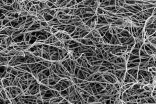(Press-News.org) GPs should consider a more overt discussion with patients when referring them for further investigation of symptoms which may indicate cancer, according to a paper published in the British Journal of General Practice.
In an NIHR-funded study, researchers from the Universities of Bristol, Cambridge, Durham and Exeter conducted interviews with patients being referred for possible lung and colorectal cancer.
They found that patients were rarely involved in the decision to be referred for investigation and that reasons for referral tended to be couched in non-specific terms rather than 'cancer investigation', even when the patient was on a cancer-specific pathway.
The National Institute for Health and Care Excellence (NICE) referral guidelines emphasise that the patient should be involved in the decision-making process and be informed of the reasons for referral. This is the first time that research has examined the extent to which these guidelines are borne out in practice.
Dr Jon Banks, Research Programme Manager at the University of Bristol's Centre for Academic Primary Care, said: "GPs face a difficult challenge when assessing whether to refer a patient for cancer investigation because many cancer symptoms are also caused by benign self-limiting illness.
"A GP referring a patient with symptoms indicating risk levels around 5 per cent may withhold discussion about cancer because they do not want to raise patient anxiety, and it is known that patients can find being referred for cancer particularly stressful.
"However our research has shown that the 'tipping point' for discussing cancer alongside referral for investigation could be set too high. We suggest that the tipping point for discussing the possibility of cancer should be moved to a lower level of risk."
The researchers found that problems can occur when a full dialogue about the referral is withheld. For example, one patient recalls seeing her details on a computer screen, prior to her secondary care appointment: 'I was looking at the screen, they don't actually say it, but I was reading on the screen it said 'cancer referral' now nobody had said that to me, and I was looking at it and that made me upset when I saw it on the screen... it was a bit scary and I was already upset, so I got really upset.'
The lack of information about referrals led to concern among some patients when their referral was processed quickly on the two week wait pathway. One patient commented: 'The fact they'd bothered to ring up and get me in early.... that began to ring a few alarm bells. There must be something there that makes it important that we short-circuit the system.'
The group also found a discrepancy between the aims of recent public health cancer awareness campaigns to encourage a cancer-based dialogue, and what is happening in clinical practice.
Dr Banks added: "Patients are being encouraged to go see their GP for what patients may perceive as everyday ailments, albeit they have persisted for longer than usual. The message is that it is appropriate to discuss these symptoms and the possibility of cancer with the GP. But our research indicates a reluctance among GPs to instigate these kinds of conversations."
The research was based on transcripts of 34 interviews with patients. They had been identified by research nurses as having one of a number of specified respiratory and lower gastrointestinal (GI) symptoms potentially associated with lung and colorectal cancer, respectively.
Patients had been referred via two main pathways. The first was the fast-track, two-week wait route, whereby patients were expected to be seen by a cancer specialist within two weeks of referral, for which the patient would normally have met the symptom-based referral criteria in the NICE guidelines. The second route was via referral to a routine clinic, with a longer waiting time, at which the patient would not necessarily see a cancer specialist.
The patients was purposively sampled for individuals to interview who varied in relation to age, sex, education level, diagnosis, and referral pathway.
INFORMATION:
Paper
'Decision making and referral from primary care for possible lung and colorectal cancer: a qualitative study of patients' experiences' by Jon Banks, Fiona M Walter, Nicola Hall, Katie Mills, William Hamilton, Katrina M Turner in the British Journal of General Practice
This study was funded by the National Institute for Health Research's Programme Grants for Applied Research (NIHR PGfAR) Programme (ref: RP-PG-0608-10045).
About the NIHR
The National Institute for Health Research (NIHR) is funded by the Department of Health to improve the health and wealth of the nation through research. Since its establishment in April 2006, the NIHR has transformed research in the NHS. It has increased the volume of applied health research for the benefit of patients and the public, driven faster translation of basic science discoveries into tangible benefits for patients and the economy, and developed and supported the people who conduct and contribute to applied health research. The NIHR plays a key role in the Government's strategy for economic growth, attracting investment by the life-sciences industries through its world-class infrastructure for health research. Together, the NIHR people, programmes, centres of excellence and systems represent the most integrated health research system in the world. For further information, visit the NIHR website.
WASHINGTON, Dec. 16, 2014 -- It's been a holiday decoration staple for decades, and it turns out that silver stuff hanging from your tree has quite a storied past. Tinsel has been made out of everything from real silver, to lead to other dangerously flammable materials. This week's Speaking of Chemistry decks your halls with the history of tinsel. Check it out at http://youtu.be/fql3aCuu1l0.
INFORMATION:
Speaking of Chemistry is a production of Chemical & Engineering News, a weekly magazine of the American Chemical Society. The program features fascinating, weird and ...
University of Guelph researchers hope their new discovery will help combat a disease killing honeybee populations around the world.
The researchers have found a toxin released by the pathogen that causes American foulbrood disease -- Paenibacillus larvae (P. larvae) -- and developed a lead-based inhibitor against it.
The study was published in the December issue of the Journal of Biological Chemistry.
The finding provides much-needed insight into how the infection occurs, said Rod Merrill, a professor in Guelph's Department of Molecular and Cellular Biology and a ...
PROVIDENCE, R.I. [Brown University] -- Newly published research provides the first demonstration of how a genetic mutation associated with a common form of albinism leads to the lack of melanin pigments that characterizes the condition.
About 1 in 40,000 people worldwide have type 2 oculocutaneous albinism, which has symptoms of unsually light hair and skin coloration, vision problems, and reduced protection from sunlight-related skin or eye cancers. Scientists have known for about 20 years that the condition is linked to mutations in the gene that produces the OCA2 protein, ...
JACKSONVILLE, Fla. -- It may not be necessary for experienced gastroenterologists to send polyps they remove from a patient's colon to a pathologist for examination, according to a large study conducted by physician researchers at the Jacksonville campus of Mayo Clinic.
Their 522-patient study, published in the December issue of Gastrointestinal Endoscopy, found that physicians correctly evaluated whether a polyp was precancerous or benign using high-definition optical lenses during a colonoscopy. Their assessment was 96 or 97 percent accurate -- depending on which of ...
There are consequences of the successful efforts worldwide to save beavers from extinction. Along with the strong increase in their population over the past 100 years, these furry aquatic rodents have built many more ponds, establishing vital aquatic habitat. In doing so, however, they have created conditions for climate changing methane gas to be generated in this shallow standing water, and the gas is subsequently released into the atmosphere. In fact, 200 times more of this greenhouse gas is released from beaver ponds today than was the case around the year 1900, estimates ...
Use of cigarettes, alcohol, and abuse of prescription pain relievers among teens has declined since 2013 while marijuana use rates were stable, according to the 2014 Monitoring the Future (MTF) survey, released today by the National Institute on Drug Abuse (NIDA). However, use of e-cigarettes, measured in the report for the first time, is high.
These 2014 results are part of an overall two-decade trend among the nation's youth. The MTF survey measures drug use and attitudes among eighth, 10th, and 12th graders, is funded by NIDA, and is conducted by researchers at the ...
EAST LANSING, Mich. --- Domestic violence can affect children even before they're born, indicates new research by Michigan State University scientists.
The study is the first to link abuse of pregnant women with emotional and behavioral trauma symptoms in their children within the first year of life. Symptoms include nightmares, startling easily, being bothered by loud noises and bright lights, avoiding physical contact and having trouble experiencing enjoyment.
"For clinicians and mothers, knowing that the prenatal experience of their domestic violence can directly ...
New Rochelle, NY, December 16, 2014--Veterans of the U.S. armed forces who have received a diagnosis consistent with transgender status are more likely to have serious suicidal thoughts and plans and to attempt suicide. A new study shows that this group has a higher risk of suicide death than the general population of veterans, as described in an article in LGBT Health, a peer-reviewed journal from Mary Ann Liebert, Inc., publishers. The article is available free on the LGBT Health website until January 16, 2015.
Based on data gathered from the VA National Patient Care ...
Scientists from the Institute of Food Research and the University of East Anglia have discovered how certain gut bacteria can protect themselves and others in the gut from antibiotics.
The bacteria produce compounds, called cephalosporinases, which inactivate and destroy certain antibiotics such as penicillin derivatives and cephalosporins, protecting themselves and other beneficial bacteria that live in close proximity. However, they may also give protection from these antibiotics to harmful bacteria, such as Salmonella.
The gut is home to hundreds of trillions of bacteria, ...
No visit to Rome is complete without a visit to the Pantheon, Trajan's Markets, the Colosseum, or the other spectacular examples of ancient Roman concrete monuments that have stood the test of time and the elements for nearly two thousand years. A key discovery to understanding the longevity and endurance of Roman architectural concrete has been made by an international and interdisciplinary collaboration of researchers using beams of X-rays at the Advanced Light Source (ALS) of the U.S. Department of Energy (DOE)'s Lawrence Berkeley National Laboratory (Berkeley Lab).
Working ...






